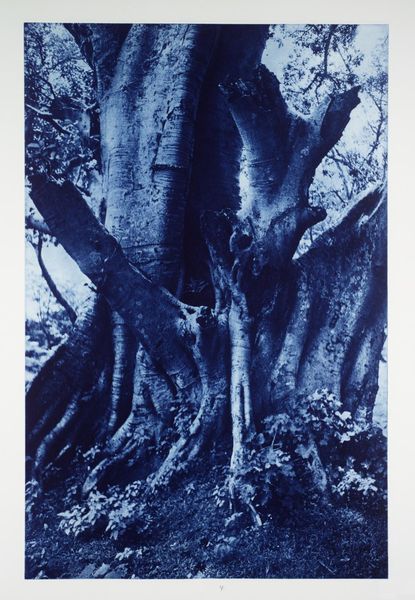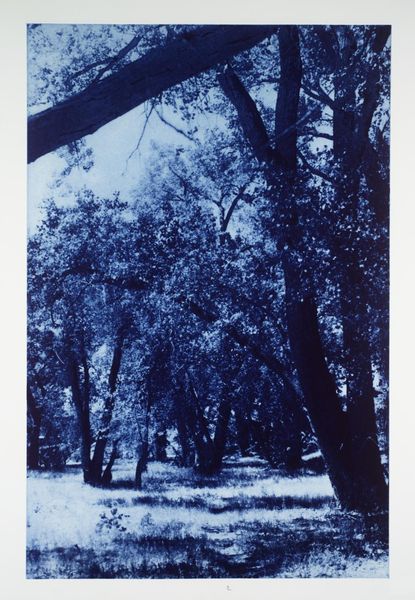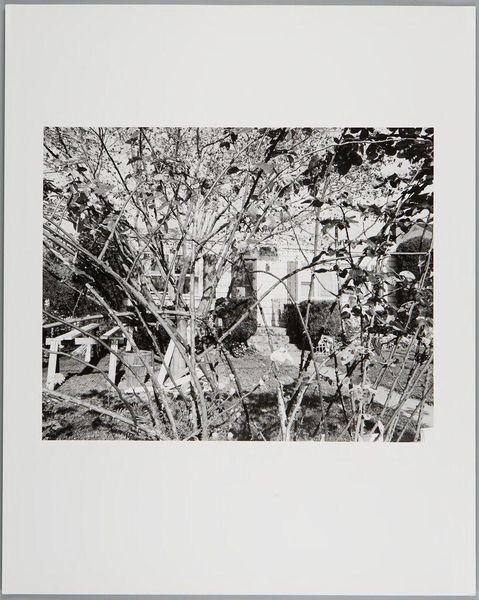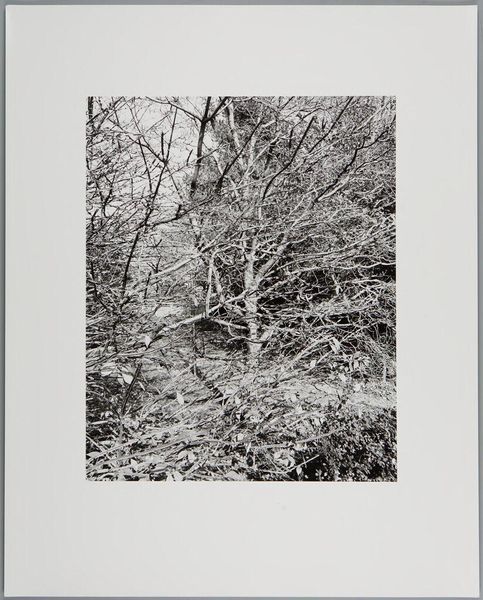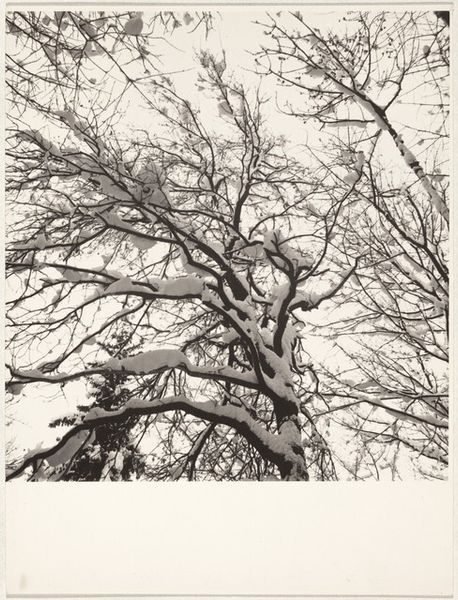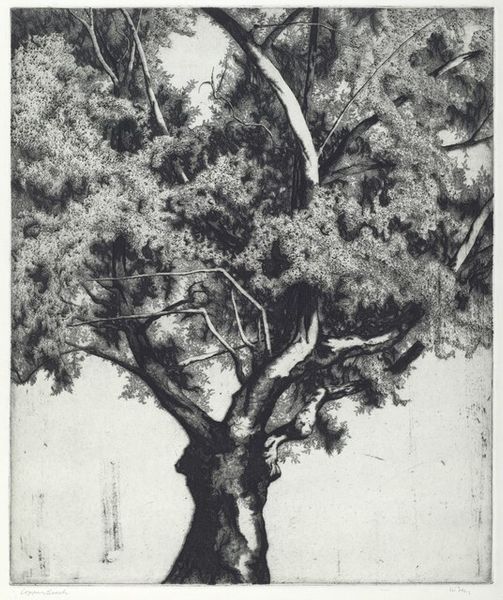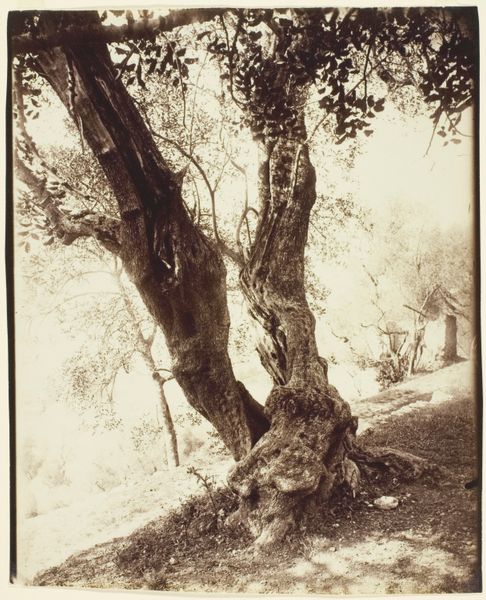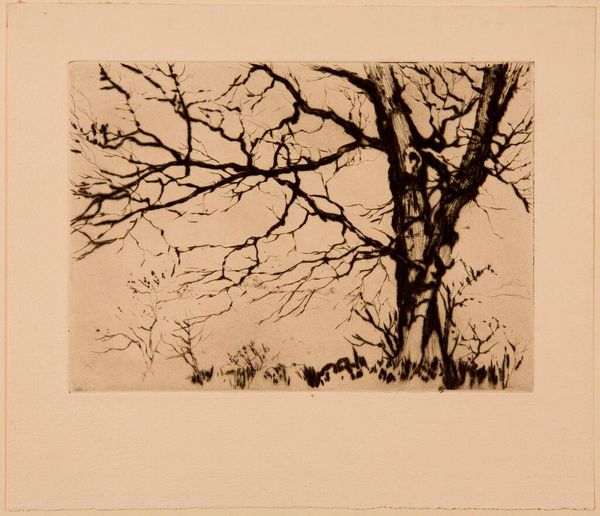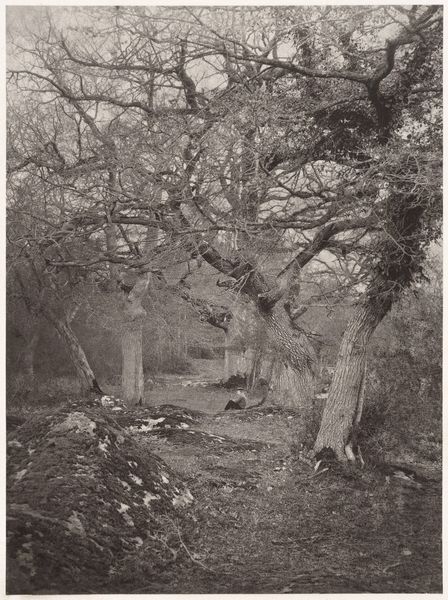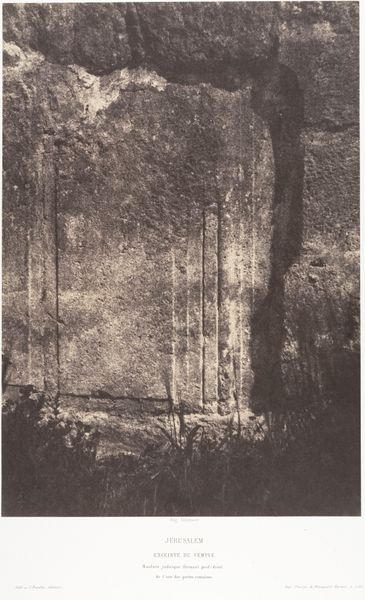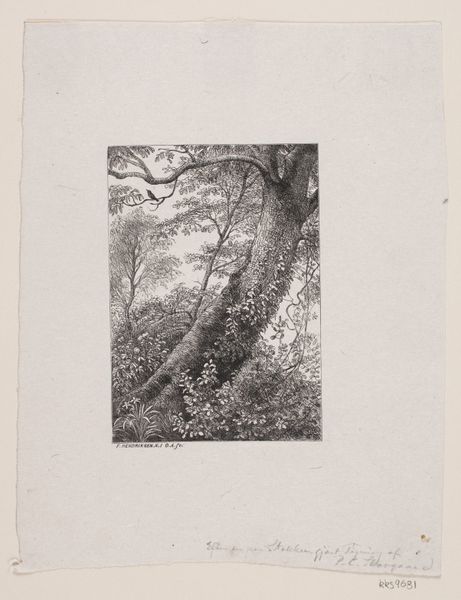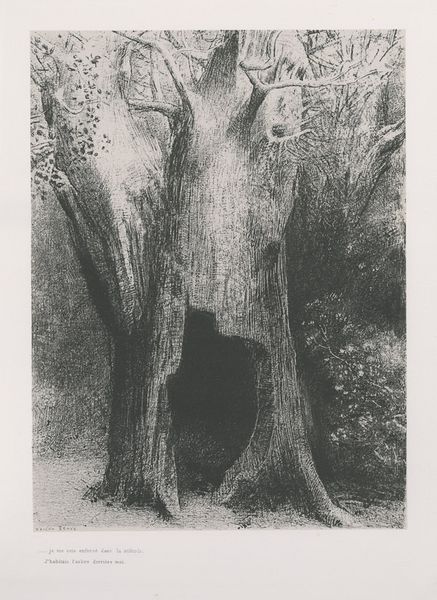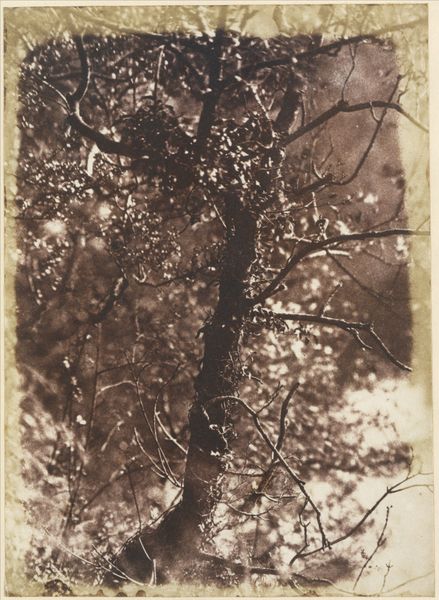
Dimensions: image: 640 x 420 mm
Copyright: © Helmut Federle | CC-BY-NC-ND 4.0 DEED, Photo: Tate
Curator: This is Helmut Federle’s "Morocco," a photogravure from 1998. It's part of the Tate collection and presents a large tree rendered in deep blues. Editor: It feels like a dreamscape, almost otherworldly. The monochrome palette gives it this somber, reflective quality. Curator: Indeed. Trees, of course, have long been symbols of life, growth, and interconnection. Federle’s choice of such a stark, almost haunting, representation prompts us to reflect on those associations, doesn't it? Editor: The singular color really strips away the everyday. It is like a memory distilled, highlighting the symbolic weight of the tree rather than its literal form. The imposing, majestic tree becomes a kind of monument. Curator: I find the cultural layering fascinating—Morocco, a place of vibrant colors, rendered in this blue. Perhaps a meditation on distance, memory, and the transformation of place into image. Editor: It certainly reframes the Moroccan landscape, inviting a slower, more contemplative viewing experience. I think it's a powerful inversion that amplifies the symbolic register. Curator: Yes, it encourages us to reconsider our perception of both the natural world and its representation. Editor: A striking image that lingers long after you’ve seen it.
Comments
Join the conversation
Join millions of artists and users on Artera today and experience the ultimate creative platform.
tate 8 months ago
⋮
Blue Sisters, Structures of Deviance is a portfolio of ten prints executed in blue ink on white paper. Five are photogravures depicting trees. The other five are soft ground etching and aquatint on paper; these images are abstract and have a smaller plate size than the photogravures. The prints were produced at Druckatelier Kurt Zein in Vienna, where the artist lives and works. They were published in an edition of thirty-five with ten artist’s and publisher’s proofs; Tate owns number eleven in the edition.
